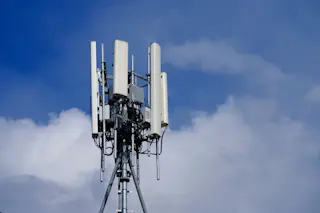A new patchlike device that adheres to your arm, back or stomach might bring a sense of touch to virtual reality.
Developed by researchers across the U.S. and China, the device combines wireless technology with small nodes that press down on the skin. Interacting with a touch-screen translates into real-time sensations — tracing your initials, for example, would lead to feeling those letters being lightly brushed across your arm. The device showcases how future devices that mimic sensations might be useful not just for VR, but physical rehabilitation, says study co-author John Rogers, a biomedical engineer with Northwestern University.
Current VR technology mostly manipulates what we hear and see. That digital world is still mostly removed from our sense of touch, even though that sensation is a large part of how we interpret the world, Rogers says. “To leave that outside the realm of what we’re doing with technology today ...














